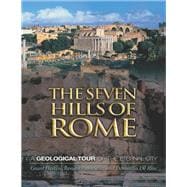
Note: Supplemental materials are not guaranteed with Rental or Used book purchases.
Purchase Benefits
Looking to rent a book? Rent The Seven Hills of Rome [ISBN: 9780691130385] for the semester, quarter, and short term or search our site for other textbooks by Heiken, Grant; Funiciello, Renato; De Rita, Donatella. Renting a textbook can save you up to 90% from the cost of buying.
| Foreword, by Walter Veltroni | p. vii |
| Preface | p. ix |
| A Tourist's Introduction to the Geology of Rome 1 Timelines | p. 18 |
| Center of the Western World--The Capitoline (Campidoglio) Hill | p. 27 |
| Palaces and Gardens--The Palatine (Palatino) Hill | p. 37 |
| The Aventine (Aventino) Hill | p. 51 |
| The Tiber Floodplain, Commerce, and Tragedy | p. 59 |
| The Tiber's Tributaries in Rome--Clogged with Humankind's Debris | p. 85 |
| The Western Heights--Janiculum, Vatican, and Monte Mario | p. 110 |
| The Celian (Celio) Hill | p. 123 |
| Largest of the Seven Hills--The Esquiline (Esquilino) | p. 153 |
| Upper Class--The Viminal (Viminale) and Quirinal (Quirinale) Hills | p. 162 |
| Field Trips in and around Rome | p. 174 |
| The Seven Hills of Rome in Fifteen Stops | p. 174 |
| Panoramas, Piazzas, and Plateaus | p. 195 |
| A Field Trip to Rome, the City of Water | p. 216 |
| Acknowledgments | p. 229 |
| Further Reading | p. 231 |
| Index | p. 237 |
| Table of Contents provided by Publisher. All Rights Reserved. |
The New copy of this book will include any supplemental materials advertised. Please check the title of the book to determine if it should include any access cards, study guides, lab manuals, CDs, etc.
The Used, Rental and eBook copies of this book are not guaranteed to include any supplemental materials. Typically, only the book itself is included. This is true even if the title states it includes any access cards, study guides, lab manuals, CDs, etc.